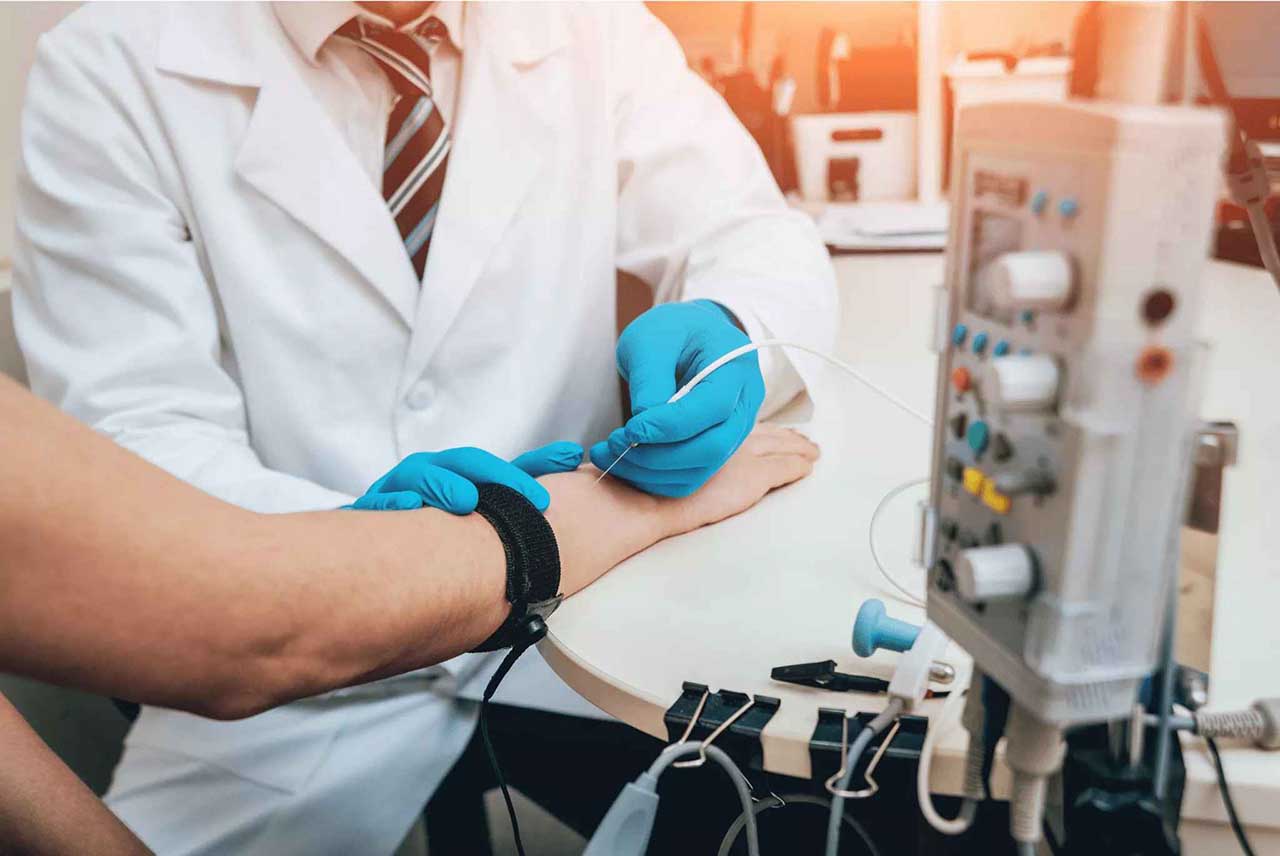
What is Neurophysiology?
Nerve Conduction Velocity (NCV)
A nerve conduction velocity (NCV) test is used to assess nerve damage and dysfunction. Also known as a nerve conduction study, the procedure measures how quickly electrical signals move through your peripheral nerves.
Your peripheral nerves are located outside of your brain and along your spinal cord. These nerves help you control your muscles and experience the senses. Healthy nerves send electrical signals more quickly and with greater strength than damaged nerves.
The NVC test helps your doctor differentiate between an injury to the nerve fiber and an injury to the myelin sheath, the protective covering surrounding the nerve. It can also help your doctor tell the difference between a nerve disorder and a condition where a nerve injury has affected the muscles.
Making these distinctions is important for proper diagnosis and determining your course of treatment.
An NCV test can be used to diagnose a number of muscular and neuromuscular disorders, including:
- Guillain-Barre syndrome
- carpal tunnel syndrome
- Charcot-Marie-Tooth (CMT) disease
- herniated disk disease
- chronic inflammatory polyneuropathy and neuropathy
- sciatic nerve problems
- peripheral nerve injury
Test: A nerve conduction study (usually done in tandem with an electromyogram) is performed to find out if there is damage to the peripheral nervous system, that is, nerves that run from the brain and spinal cord to the arms and legs. This test is often done to diagnose conditions such as Carpal Tunnel Syndrome and Guillain-Barre syndrome; and check for nerve damage following an injury or as a result of conditions such as diabetes.
In this test, the nerve is electrically-stimulated by a primary electrode, while a second electrode detects the electrical impulse “down-steam” from the fist. This is usually done with surface patches that are placed on the skin, over the nerve at various places. The primary electrode sends a mild electrical impulse that is recorded by the secondary electrode. The time it takes for the impulse to travel from electrode to electrode is used to calculate the speed of impulse transmission, which is then used by the doctor to determine if there is any damage to the nerves.
The nerve conduction test may take from 15 minutes to 1 hour or more, depending on how many nerves and muscles are studied. This procedure is non-invasive and is risk-free. The voltage of the electrical pulses is very small and unlikely to cause any injury.
Electromyography (EMG)
An electromyography (EMG) is a diagnostic test that is used to record the electrical activity of muscles at rest and when they active. Motor neurons transmit electrical impulses to the muscles, instructing them to contract or relax. Active muscles produce an electrical current that is proportional to the level of the muscle activity. An EMG translates these signals into graphs, sounds or numerical values that can be interpreted to understand the health of the muscles.
An EMG can be used to detect abnormalities in the muscles’ electrical activity that can occur in many diseases and conditions, including, but not limited to:
- Muscular dystrophy
- Inflammation of muscles
- Pinched nerves
- Peripheral nerve damage (damage to nerves in arms and legs)
- Amyotrophic lateral sclerosis (neurological disease that attacks nerve cells that control voluntary muscles)
- Myathenia gravis (autoimmune disease that causes weakening of skeletal muscles)
- Disc herniation (abnormal rupture of spine disc)
An EMG is done when patients experience unexplained muscle weaknesses. The test helps to distinguish between problems originating from the muscles themselves, or from nerve disorders. Symptoms that may require an EMG are:
- Tingling
- Numbness
- Muscle weakness
- Muscle pain or cramping
- Certain types of limb pain
Test: In order to conduct an EMG, a needle electrode that is attached to a recording machine is inserted into a muscle. The electrode then records the electrical activity in the muscles when it is at rest. Patient will be asked to flex the muscle slowly and steadily, and the electrode will record the change in electrical activity. The electrode may be moved several times in order to collect a variety of different readings in different muscles.Prior to conducting the test, patients are advised to consult the doctor if:
- Are on any medication, as certain medicines can affect the EMG results. Patient may be advised to stop taking certain medications for up to six days before the test
- Have experienced any bleeding problems, or are taking any blood thinners
- Have a pacemaker
Patient is also advised to avoid smoking, and eating or drinking anything that contains caffeine for a minimum of three hours before the test. Patient should wear loose fitting clothes, or will be provided a hospital gown to wear. Patient should also take a bath or a shower before the exam to remove oil on the body. Do not apply lotions or creams to the skin before the exam.